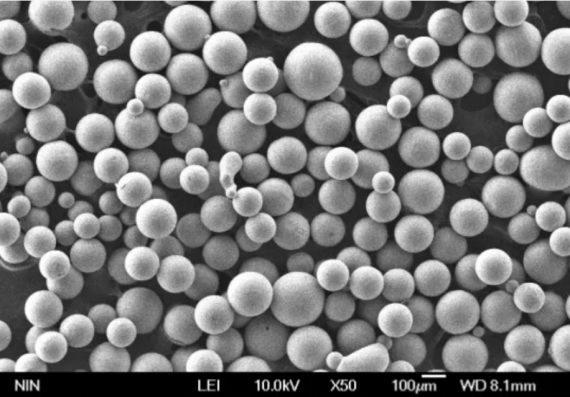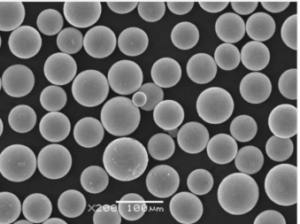FeCoNiCr powder, a high-entropy alloy (HEA), is gaining prominence in advanced manufacturing, materials science, and industrial applications due to its exceptional properties. Known for its versatility and robust performance, this metal alloy powder comprises iron (Fe), cobalt (Co), nickel (Ni), and chromium (Cr). Whether you’re an engineer, researcher, or manufacturer, understanding FeCoNiCr powder can transform your processes and applications.
In this article, we’ll delve deep into FeCoNiCr powder’s composition, characteristics, applications, advantages, and limitations. We’ll also compare different models and grades, discuss supplier options, and answer some frequently asked questions.

Overview of FeCoNiCr Powder
FeCoNiCr powder belongs to the family of high-entropy alloys, which are multi-element systems with near-equal proportions. This unique composition results in exceptional strength, corrosion resistance, thermal stability, and fatigue resistance—qualities highly desirable in critical engineering applications.
Key Details at a Glance
| Property | Detail |
|---|---|
| Elements | Iron (Fe), Cobalt (Co), Nickel (Ni), Chromium (Cr) |
| Category | High-Entropy Alloy (HEA) |
| Applications | Aerospace, Automotive, Biomedical, Tooling, Energy Storage |
| Strengths | Excellent mechanical properties, thermal stability, and corrosion resistance |
| Production Methods | Powder Metallurgy, Additive Manufacturing, and Thermal Spraying |
Composition of FeCoNiCr Powder
The composition of FeCoNiCr powder involves near-equimolar ratios of its constituent metals. However, varying the composition slightly can yield specific material properties. Here’s a breakdown:
| Composition | Elemental Content (wt%) | Role |
|---|---|---|
| Iron (Fe) | 20–25 | Provides base strength and ductility |
| Cobalt (Co) | 20–25 | Enhances magnetic and wear resistance |
| Nickel (Ni) | 20–25 | Improves corrosion resistance and toughness |
| Chromium (Cr) | 20–25 | Adds oxidation resistance and hardness |
Characteristics of FeCoNiCr Powder
What makes FeCoNiCr powder so unique? Here’s a detailed look at its characteristics:
| Characteristic | Description |
|---|---|
| Thermal Stability | Retains mechanical properties at high temperatures, ideal for aerospace applications. |
| Corrosion Resistance | Superior resistance against oxidation, making it suitable for harsh environments. |
| High Hardness | Excellent wear resistance, extending the lifespan of tools and components. |
| Magnetic Properties | Strong magnetic characteristics, particularly in applications with cobalt and iron content. |
| Customizability | Elemental ratios can be adjusted for specific applications. |






Advantages of FeCoNiCr Powder
Why choose FeCoNiCr powder over other alloys? Here’s what sets it apart:
- Exceptional Durability: FeCoNiCr outperforms many traditional alloys in high-stress environments.
- Versatility in Applications: From aerospace to biomedical, it adapts to diverse fields.
- Cost-Effective Production: Powder metallurgy reduces waste, optimizing material usage.
- Eco-Friendly: Longer component lifespans translate to reduced material and energy consumption.
FeCoNiCr Powder Models and Grades
Various models of FeCoNiCr powder cater to different industries and applications. Below are ten notable models:
| Model | Description |
|---|---|
| FeCoNiCr-Al | Enhanced thermal stability for high-temperature applications. |
| FeCoNiCr-Mn | Improved corrosion resistance for marine environments. |
| FeCoNiCr-Ti | Titanium addition for higher strength and lightweight applications. |
| FeCoNiCr-WC | Tungsten carbide addition for extreme wear resistance in tooling. |
| FeCoNiCr-BN | Boron nitride enhanced for lubrication and wear resistance. |
| FeCoNiCr-Cu | Copper inclusion for better electrical conductivity. |
| FeCoNiCr-Nb | Niobium addition for precipitation hardening in aerospace components. |
| FeCoNiCr-Zr | Zirconium content for superior oxidation resistance. |
| FeCoNiCr-Si | Silicon addition for improved machinability and oxidation resistance. |
| FeCoNiCr-Ce | Rare-earth elements for enhanced magnetic and thermal properties. |
Applications of FeCoNiCr Powder
FeCoNiCr powder finds usage in multiple industries due to its versatility and superior properties:
| Industry | Application | Specific Benefits |
|---|---|---|
| Aerospace | Jet engine components, turbine blades | High thermal stability and fatigue resistance. |
| Automotive | Engine parts, exhaust systems | Corrosion resistance and high-temperature performance. |
| Biomedical | Implants, prosthetics | Biocompatibility and wear resistance. |
| Tooling | Cutting tools, molds | Extreme hardness and wear resistance. |
| Energy | Battery electrodes, fuel cells | High electrical conductivity and stability. |
Specifications, Sizes, and Grades
| Parameter | Detail |
|---|---|
| Particle Size Range | 10–150 µm |
| Purity Levels | >99% |
| Standards Met | ASTM F75, ISO 5832-1 |
| Packaging Options | 1 kg, 5 kg, 25 kg |
| Grades Available | Standard, Ultra-Pure, Customized Composition |
Suppliers and Pricing Details
| Supplier | Region | Pricing (Approx.) | Special Features |
|---|---|---|---|
| Carpenter Technology | USA | $100–$120/kg | Offers custom alloy formulations. |
| Höganäs AB | Sweden | $90–$110/kg | Leader in powder metallurgy materials. |
| Sandvik Materials | Global | $95–$125/kg | High-purity and reliable supply chain. |
| AMETEK Specialty | USA | $105–$130/kg | Focus on aerospace-grade alloys. |
| VDM Metals | Germany | $110–$140/kg | Known for high-quality powder standards. |

Pros and Cons of FeCoNiCr Powder
| Aspect | Pros | Cons |
|---|---|---|
| Performance | Exceptional thermal and corrosion resistance | Higher cost compared to conventional alloys. |
| Customizability | Elemental composition tailored to needs | Requires advanced manufacturing techniques. |
| Durability | Long service life in harsh conditions | Limited knowledge base compared to traditional alloys. |
FAQs
| Question | Answer |
|---|---|
| What is FeCoNiCr powder used for? | Aerospace components, biomedical implants, tooling, and energy storage. |
| How is FeCoNiCr powder made? | Through advanced powder metallurgy, additive manufacturing, or thermal spraying. |
| Can the composition be customized? | Yes, the elemental ratio can be adjusted to optimize specific properties. |
| What are the primary benefits of FeCoNiCr powder? | High strength, corrosion resistance, and excellent thermal stability. |
| Is FeCoNiCr powder eco-friendly? | Yes, it offers longer component life and reduces material waste. |
| What industries rely on FeCoNiCr powder? | Aerospace, automotive, biomedical, tooling, and energy sectors. |
| Are there alternatives to FeCoNiCr powder? | Yes, other high-entropy alloys or traditional superalloys like Inconel or Hastelloy. |
| How does FeCoNiCr compare to Inconel? | FeCoNiCr offers better customizability and comparable thermal and corrosion resistance. |
| What is the average cost of FeCoNiCr powder? | Between $90 and $140 per kilogram, depending on purity and supplier. |
| What challenges exist in using FeCoNiCr powder? | Higher production costs and limited historical data compared to traditional alloys. |

